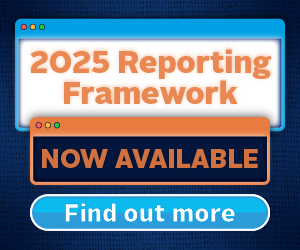All Stewardship articles – Page 20
-
Technical guide
Developing a climate change strategy step three: review
Asset owners can put processes in place to assess how effective they are in implementing their chosen strategies.
-
Technical guide
Portfolio climate change strategy three: avoid
Where an asset owner is exposed to companies dependent on fossil fuel reserves (conventional and unconventional oil, gas and coal), reallocation is a way to reduce this exposure, bearing in mind that fossil fuels are a key component of the world economy and that sectors such as electric utilities may ...
-
Technical guide
Developing an asset owner climate change strategy
There is a growing imperative for asset owners to align their investment portfolios with a low-carbon economy.
-
Technical guide
Portfolio climate change strategy two: invest
Asset owners can consider investing with cilmate change integrated into decision making.
-
Technical guide
Portfolio climate change strategy one: engage
Engagement could be effective in various ways.
-
 Engagement guide
Engagement guideHuman rights and the extractive industry: why engage, who to engage, how to engage
Extractive companies are among those companies that have the most daily impact on our lives. They have an impact on their workers, the communities located near their operations, and the people living in the operating country. They use countries’ natural resources, which ultimately belong to their citizens, and therefore need ...
-
Engagement guide
Why are PRI investors using the UN Guiding Principles as a framework for engagement?
There is a global expectation today that all companies respect human rights.
-
Engagement guide
Six engagement areas on human rights in the extractive industry
The following section contains questions for investors to consider when engaging with companies in the six areas.
-
Engagement guide
How to adapt engagement on human rights in the extractive industry to leaders and laggards
Based on findings from the PRI roundtables with extractive companies, and research into the reporting of 50 extractive companies, the PRI in conjunction with steering committee members suggest six areas for engagement.
-
Engagement guide
The need for collaborative investor action on human rights in the extractive industry
Extractive companies face complex human rights risks. They are often confronted with dilemmas rather than clean-cut solutions when it comes to respecting human rights, particularly in emerging markets.
-
Blog post
Enabling institutional investors' collective action: the role of PRI
Corporate executives often struggle to focus their attention on every issue at the same time, so must prioritise the claims of the most important stakeholders.
-
Blog post
Why talk? A process model of dialogue in shareholder engagement
Ferraro and Beunza analyse data on shareholder engagements from a faith-based coalition (ICCR, Interfaith Center for Corporate Responsibility) to develop a process model for dialogue.
-
Technical guide
ESG screening in fixed income investing
Fixed income investors apply ESG filters or screens to their investment universe to control which issuers or securities are considered for investment. This is an effective way of ensuring their investments are aligned with their (client’s) ethical motivations and reduces reputational risks.
-
Discussion paper
Director nomination process: Discussion paper - Part 2
The second part of the discussion paper on the director nomination process includes detailed reviews of the nomination process in seven national jurisdictions.
-
 Discussion paper
Discussion paperDirector nomination process: Discussion paper - Part 1
Part one of the discussion paper presents an overview of the director nominations process.
-
 Engagement guide
Engagement guideWater risks in agricultural supply chains
Global fresh water supplies have become increasingly exposed to risk as a result of both growing demand, and pressures on supply, including those linked to climate change.
-
Engagement guide
Analysing water risks in agricultural supply chains
WWF applied its technical expertise by identifying those crops and basins facing the most significant water risks globally.
-
Engagement guide
The PRI's engagement on water risks
In 2012, following a period of consultation with PRI signatories and the Investor Engagement Steering Committee, water risks were identified as a priority area for the PRI’s coordinated collaborative engagement programme.
-
Thought leadership
Responsible business in conflict-affected and high-risk areas
Companies and their investors are paying increased attention to the challenges and opportunities of doing business in conflict-affected and high-risk areas.
-







